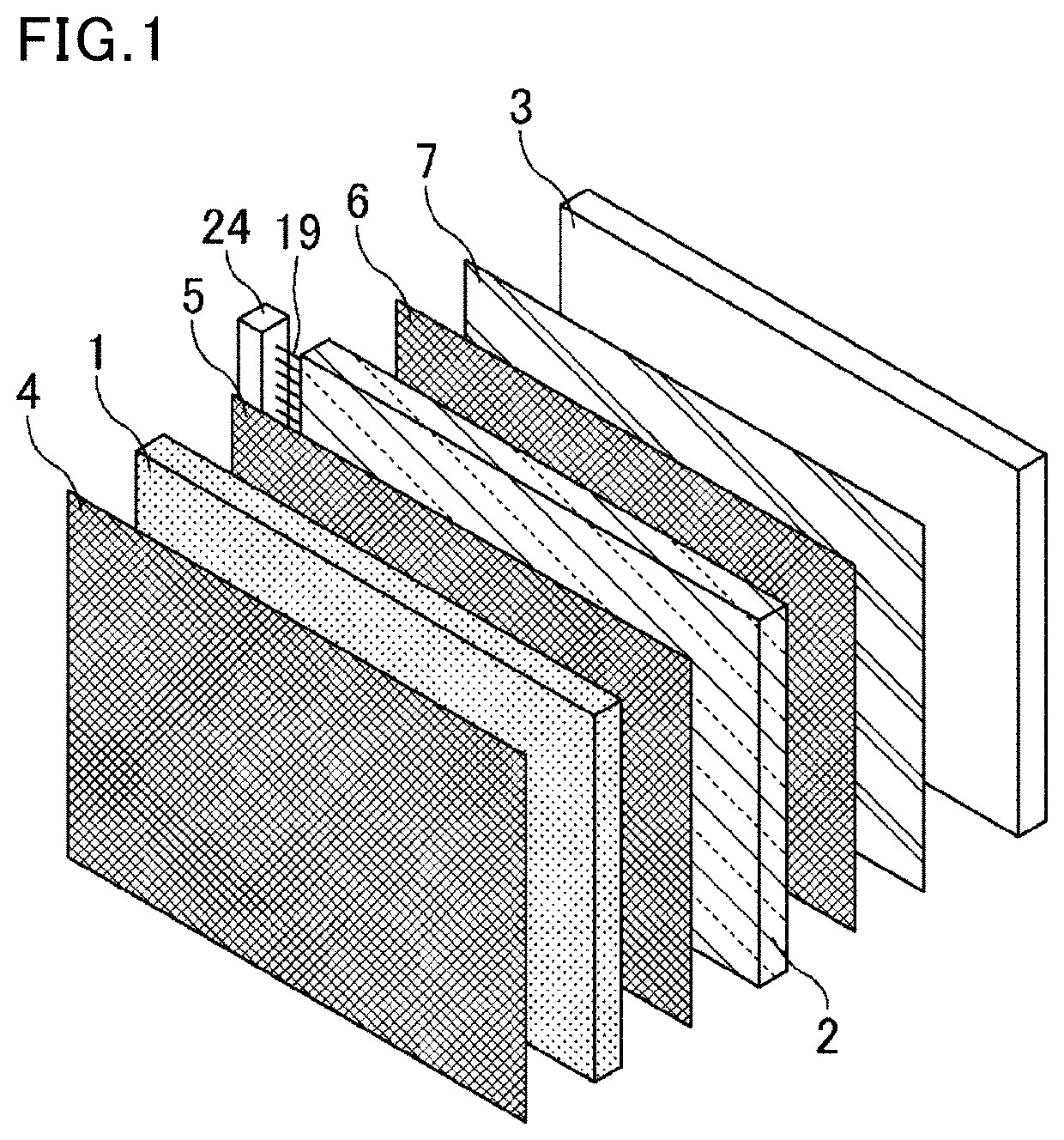Dimming panel, dimming unit, and liquid crystal display device
a technology of dimming unit and dimming panel, which is applied in the direction of static indicating device, non-linear optics, instruments, etc., can solve the problems of large brightness difference and significant size of local dimming illumination areas
- Summary
- Abstract
- Description
- Claims
- Application Information
AI Technical Summary
Benefits of technology
Problems solved by technology
Method used
Image
Examples
example 1
[0114]FIG. 1 is an exploded perspective view of a liquid crystal display device of Example 1. As shown in FIG. 1, the liquid crystal display device of Example 1 includes an image-providing liquid crystal panel 1, a backlight 3, and a dimming panel 2 between the image-providing liquid crystal panel 1 and the backlight 3. A pair of polarizers may be disposed on the surfaces of the image-providing liquid crystal panel 1 and on the surfaces of the dimming panel 2. As shown in FIG. 1, a first polarizer 4, the image-providing liquid crystal panel 1, a second polarizer 5, the dimming panel 2, and a third polarizer 6 may be disposed in this order. The image-providing liquid crystal panel 1 and the dimming panel 2 may share the second polarizer 5 disposed therebetween. The first polarizer 4 and the second polarizer 5 are arranged with their absorption axes being perpendicular to each other. The second polarizer 5 and the third polarizer 6 are arranged with their absorption axes being perpend...
example 2
[0136]Hereinafter, a liquid crystal display device of Example 2 is described with reference to FIG. 15 to FIG. 18. The liquid crystal display device of Example 2 has the same structure as that of Example 1 except for the structure of the first electrodes used in the dimming panel. The description for the structures similar to the liquid crystal display device of Example 1 is omitted here. FIG. 15 is a schematic plan view showing one of first electrodes used in a dimming panel of Example 2. FIG. 16 is a plan view of the first electrodes arranged with reference to the pixels of the image-providing liquid crystal panel. FIG. 18 is a schematic plan view of the dimming panel in Example 2, showing an example of a method for driving the first electrodes. FIG. 17 is a schematic plan view showing an arrangement example of first electrodes shown in FIG. 15. In FIG. 15 and FIG. 17, the portions surrounded by two-dot chain lines are positioning areas for locating the first electrodes. In FIG. 1...
example 3
[0143]Hereinafter, a liquid crystal display device of Example 3 is described with reference to FIG. 19 to FIG. 25 and FIG. 26A to FIG. 26C. The liquid crystal display device of Example 3 has the same structure as that of Example 1 except for the structure of the first electrodes used in the dimming panel. The description for the structures similar to the liquid crystal display device of Example 1 is omitted here. FIG. 19 is a schematic plan view showing one of first electrodes used in a dimming panel of Example 3. FIG. 20 is a schematic plan view showing an arrangement example of first electrodes shown in FIG. 19. In FIG. 19 and FIG. 20, the portions surrounded by two-dot chain lines are base electrodes.
[0144]As shown in FIG. 19, the outer peripheral shape of the positioning areas for locating the first electrodes in Example 3 is a quadrangle (square). Each base electrode 214a is provided with multiple apertures 214c (214Ac). Multiple island electrodes 214b (214Ab) surround the base...
PUM
| Property | Measurement | Unit |
|---|---|---|
| angle | aaaaa | aaaaa |
| angle | aaaaa | aaaaa |
| gap width | aaaaa | aaaaa |
Abstract
Description
Claims
Application Information
 Login to View More
Login to View More - R&D
- Intellectual Property
- Life Sciences
- Materials
- Tech Scout
- Unparalleled Data Quality
- Higher Quality Content
- 60% Fewer Hallucinations
Browse by: Latest US Patents, China's latest patents, Technical Efficacy Thesaurus, Application Domain, Technology Topic, Popular Technical Reports.
© 2025 PatSnap. All rights reserved.Legal|Privacy policy|Modern Slavery Act Transparency Statement|Sitemap|About US| Contact US: help@patsnap.com



